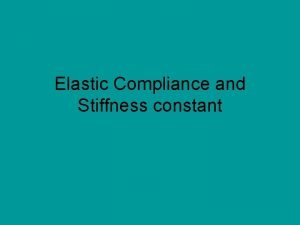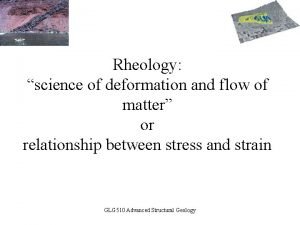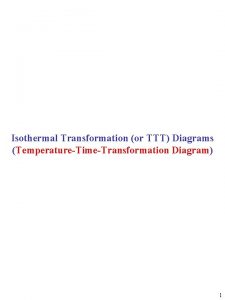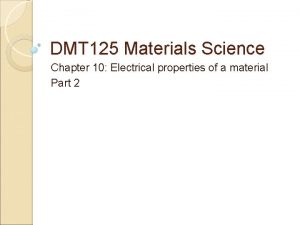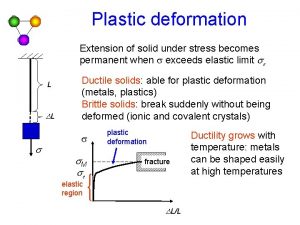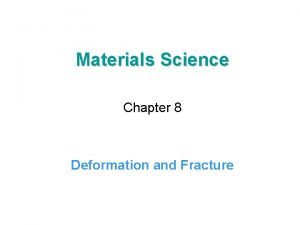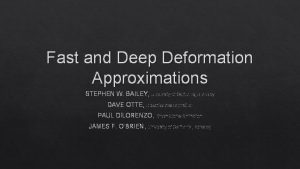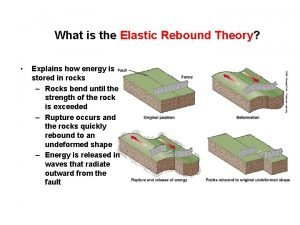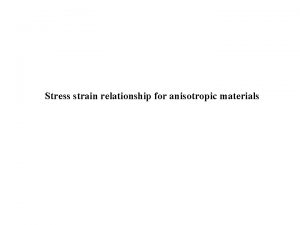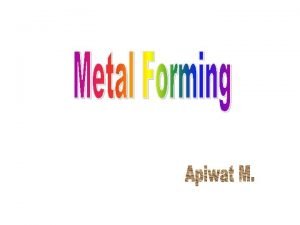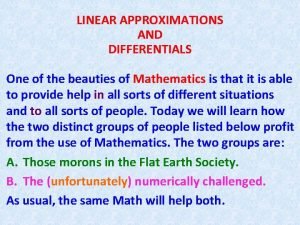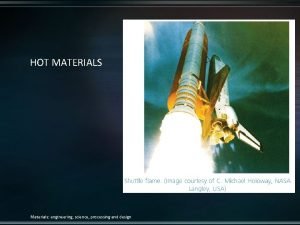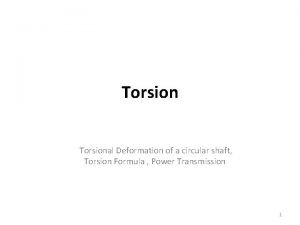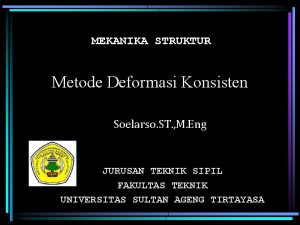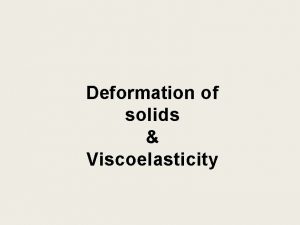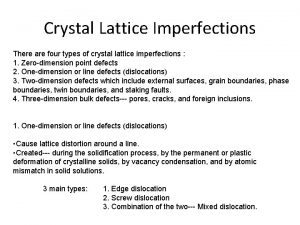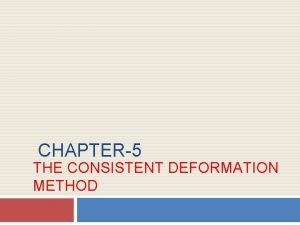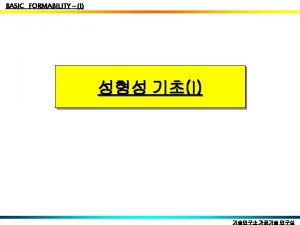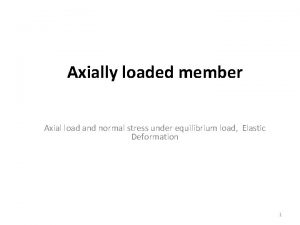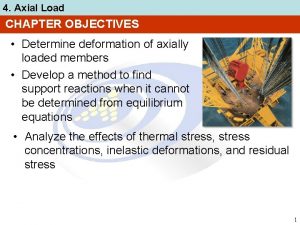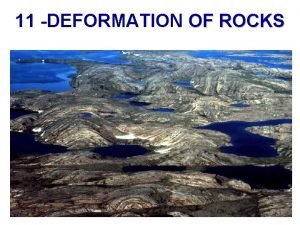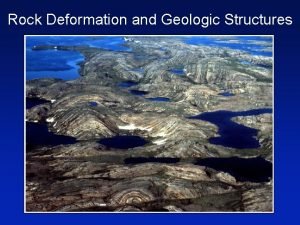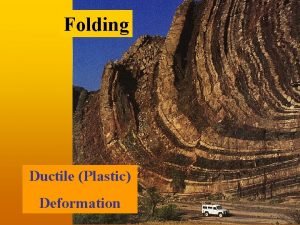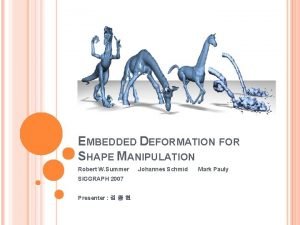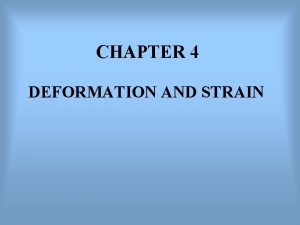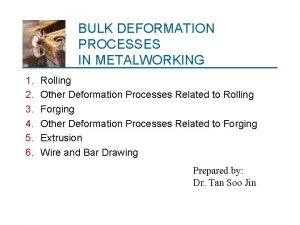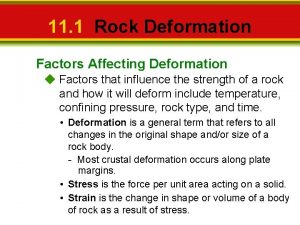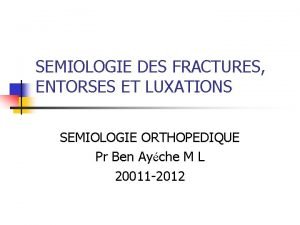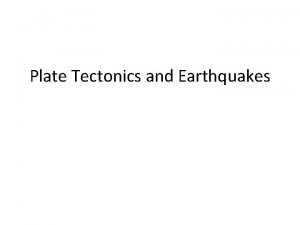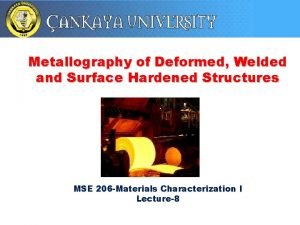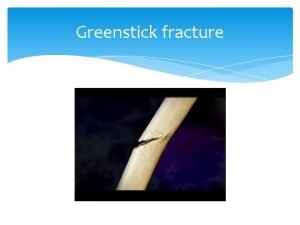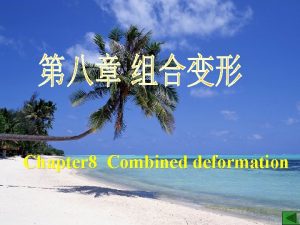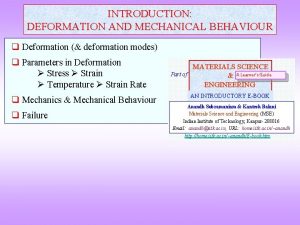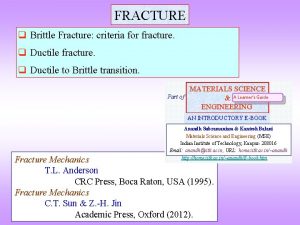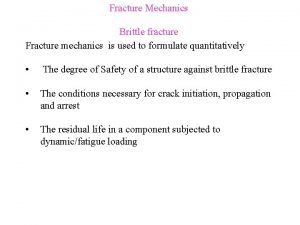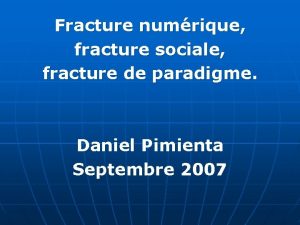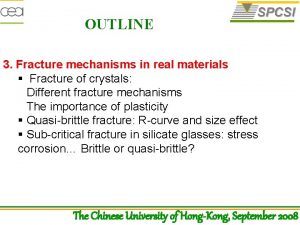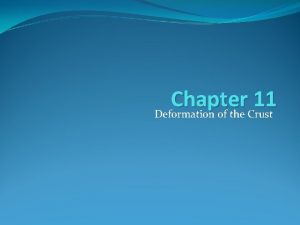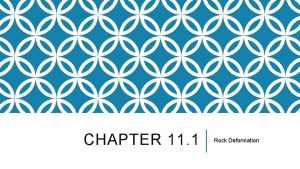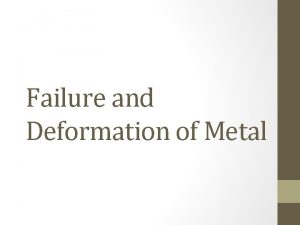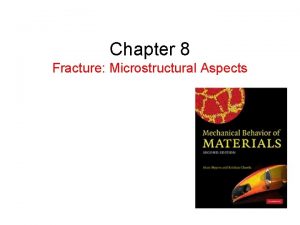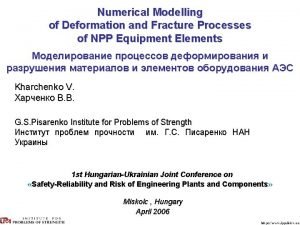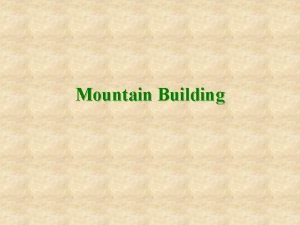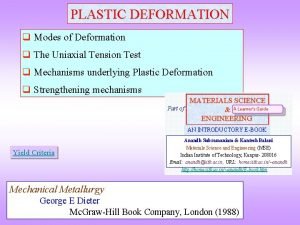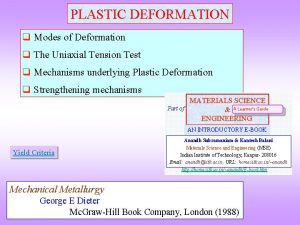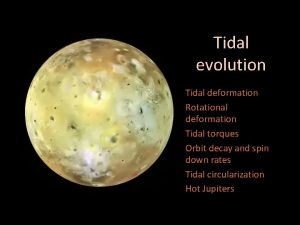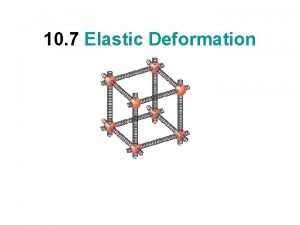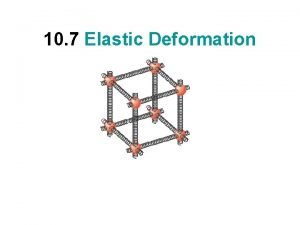Materials Science Chapter 8 Deformation and Fracture Outline


















































- Slides: 50

Materials Science Chapter 8 Deformation and Fracture

Outline 8 -1 Elastic Deformation Elastic Moduli vs Temperature Elastic Moduli vs Crystal Direction 8 -2 Plastic Deformation Strength Hardness Ductility True Stress and Strain 8 -3 Deformation Mechanism slip systems Mechanism of slip Dislocation movements in solid solutions plastic deformation of compounds 8 -4 Fracture Toughness test Ductility-tension temperature Fracture Toughness Design Considerations




Concepts of Stress and Strain (tension and compression) To compare specimens of different sizes, the load is calculated per unit area. Engineering stress: s = F / Ao F is the load applied perpendicular to specimen cross-section; Ao is cross-sectional area (perpendicular to the force) before application of the load. Engineering strain: ε = l / lo (× 100 %) l is change in length, lo is the original length. These definitions of stress and strain allow one to compare test results for specimens of different cross-sectional area Ao and of different length lo. Stress and strain are positive for tensile loads, negative for compressive loads

Elastic Moduli When only elastic deformation exists, strain is proportional to the applied stress The greater the forces of attraction between atoms in a material, the higher the modulus of elasticity Any lengthening or compression of the crystal structure in one direction, due to a uniaxial force, produces an adjustment in the dimensions at right angles to the force.






Poisson’s Ratio The –ve ratio between the lateral strain ey and the direct tensile strain ez In shear loading, the two forces are parallel but are not aligned. As a result, the shear stress, s is the shear force, Fs divided by the sheared area, As: = Fs/As Shear stress produces angular displacement, . Shear strain, , is the tangent of that angle = x/y in the next Figure

Elastic Shear Strain: Shear couples produce a relative displacement of one plane of atoms past the next. The strain is elastic as long as the atoms keep their original neighbours. (a) No strain, (b) Shear strain

The recoverable or elastic shear strain shear stress G= / G is the shear modulus or the modulus of rigidity. It is different from the modulus of elasticity but they interrelated. E = 2 G (1 + ) Poison’s ratio between 0. 25 0. 5, G is approx. 35% E. Bulk Modulus, K The reciprocal of the compressibility = hydrostatic pressure Ph/unit volume of compression, V/V


Elastic Moduli vs Temperature Discontinuity in case of Fe is due to the change from bcc to fcc which required greater stress. Why?

Elastic Moduli vs Crystal Direction • Elastic moduli are anisotropic within materials; vary with crystallographic direction. E. g. Fe modulus of elasticity = 205 GPa; • Actually, modulus of a crystal of iron varies from 280 GPa in the [111] direction to only 125 GPa in the [100] direction. • The consequence of any such anisotropy becomes significant in polycrystalline materials.

Assume, a cross-section of a steel wire, the average stress is 205 MPa. If the grains are randomly oriented, the elastic strain is 0. 001, because the average modulus of elasticity is 205 GPa. However, in reality, the stress varies from 125 MPa to 280 MPa as shown in (b), because grains have different orientations, but each is strained equally (0. 001). This means that some grains will exceed their yield strength before other grains reach their yield strength.




For structural applications, the yield stress is usually a more important property than the tensile strength, since once the yield stress has passed, the structure has deformed beyond acceptable limits.




True stress = load/ actual area in the necked-down region, continues to rise to the point of fracture, in contrast to the engineering stress. σ = F/Ao ε = (li-lo/lo) σT = F/Ai ε T = ln(li/lo)


Both tensile strength and hardness may be regarded as degree of resistance to plastic deformation. Hardness is proportional to the tensile strength – but note that the proportionality constant is different for different materials.

Deformation Mechanisms Cubic metals readily deform by plastic shear or slip. Sliping: one plane of atoms slides over the next adjacent plane. Shear deformation also occurs when compression or tension forces are applies




Mechanism of slip The strength of metals = shear modulus/6


If we place a shear stress along the horizontal direction, the dislocation can be moved with shearing displacement within the crystal. The slip mechanism requires energy, E IGb 2


Solid solution dislocations


Plastic deformation of compounds In Metals : each atom is surrounded by similar atoms. In compounds: two or more atom types are there, deformation brings like atoms together and separates a fraction on unlike atoms High Energy is required (resistance to shear)

Plastic deformation of compounds





Fracture • Fracture is the ultimate mechanical failure. brittle less energy is required Fracture Ductile large energy is required Brittle fracture: requires energy to separate atoms and to expose new surface along the fracture path Ductile fracture: require not only the energy to separate atoms but also much additional energy to deform plastically the material adjacent to the fracture path

Toughness Test. The notched test specimen-arrow in (a) and sketched in (b)-is broken by the impact of the swinging pendulum (c). The amount of energy absorbed is calculated from the arc of the follow through swing

Ductility vs Temperature Many materials exhibit a significant drop in ductility and toughness as the temperature is lowered. In glass and other amorphous materials, this corresponds to the glass transition temperature. Metals are crystalline i. e. no glass transition temperature, however, they have ductility transition temperature, Tdt

Steel C is preferred, especially in areas with very cold winter. Steel with higher ductility transition temperature would crack faster until a ship is completely broken. Fine-grained steel have low ductile transition temprature.

Fracture Toughness, KIC Impact test: qualitative, it does not result in data that can be used for design considerations. Fracture Mechnaics: Fracture starts with stress concentrations
 Elastic compliance and stiffness constants
Elastic compliance and stiffness constants Deformation and flow of matter
Deformation and flow of matter Ductile failure example
Ductile failure example My favourite subject worksheet
My favourite subject worksheet Quote sandwich paragraph example
Quote sandwich paragraph example Natural materials and man made materials
Natural materials and man made materials All household materials are useful
All household materials are useful Natural man made
Natural man made Adapting and adopting materials
Adapting and adopting materials Introduction to materials science for engineers chapter 10
Introduction to materials science for engineers chapter 10 Introduction to materials science for engineers chapter 10
Introduction to materials science for engineers chapter 10 Direct materials budget with multiple materials
Direct materials budget with multiple materials Bcc steel
Bcc steel Elastic and plastic deformation
Elastic and plastic deformation Stephen w bailey
Stephen w bailey Elastic deformation and rebound
Elastic deformation and rebound Orthotropic and anisotropic materials
Orthotropic and anisotropic materials Flashless forging process
Flashless forging process Linear approximations and differentials
Linear approximations and differentials Natural science grade 7 term 3
Natural science grade 7 term 3 Grade 7 ns term 2
Grade 7 ns term 2 Materials engineering science processing and design
Materials engineering science processing and design Kerberos iitd
Kerberos iitd Natural science grade 6 term 3
Natural science grade 6 term 3 Rossby radius of deformation
Rossby radius of deformation Torsional deformation formula
Torsional deformation formula Rolling deformation
Rolling deformation Metode konsisten deformasi
Metode konsisten deformasi Viscoelasticity
Viscoelasticity Crystal lattice imperfections
Crystal lattice imperfections Method of consistent deformations
Method of consistent deformations Elastic deformation
Elastic deformation St venant principle
St venant principle Method
Method Temperature effects on axially loaded members
Temperature effects on axially loaded members Overturned fold
Overturned fold Make your own folds and faults
Make your own folds and faults Basin vs dome
Basin vs dome Horizontal
Horizontal Deformation graph
Deformation graph Strain vs deformation
Strain vs deformation Bulk deformation process
Bulk deformation process Factors affecting rock deformation
Factors affecting rock deformation Rossby radius
Rossby radius Bulk deformation processes
Bulk deformation processes Deformation
Deformation Canary tsunami threat
Canary tsunami threat Force musculaire cotation
Force musculaire cotation Deformation
Deformation Bulk deformation processes
Bulk deformation processes Surface hardening process
Surface hardening process
